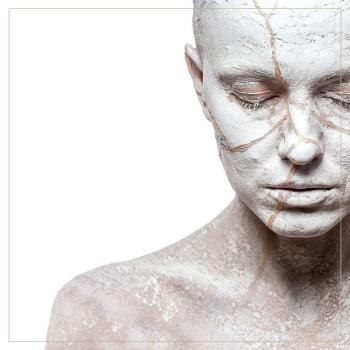As I began to read more about what Christians believe, I found that the Church Fathers and Doctors ("Doctor" being a title given to saints of the highest wisdom) said many powerful things in defense of victims of sexual abuse. St. Augustine, writing about the virgin martyrs of the early Church, lashed out at pagans who claimed that virgins who had been raped were no longer virgins: "What sane man can suppose that, if his body be seized and forcibly made use of to satisfy the lust of another, he thereby loses his purity?"
Although I was aware of these things, try as I might I was unable to internalize the knowledge that I was innocent of what had been done to me. Instead, I felt like there was a black mark on my childhood, a blotch of indelible ink. The more I tried to cover up this feeling by repressing the bad memories, the more the pain, loss, and shame threatened to seep into every corner of my adult life.
***
After I entered the Catholic Church in 2006, my journey toward healing began in earnest. I learned an ancient prayer that opened me up to a new understanding of the workings of grace. It is called the Anima Christi ("Soul of Christ") and begins with these words:
Soul of Christ, sanctify me
Body of Christ, save me
Blood of Christ, inebriate me
Water from Christ's side, wash me
Passion of Christ, strengthen me
O good Jesus, hear me
Within Thy wounds hide me
Suffer me not to be separated from Thee . . .
Do you notice how the prayer's perspective shifts? It goes from asking Christ to be within you to asking that you may be within him. More than that, where in Christ are you asking to be sheltered? Within his wounds.
Until I began to reflect upon that prayer, my faith life was entangled in a forest of questions: How could I believe in God's protective love, when my own family failed to protect me? How could I be a child to God when I never had a real childhood? How could I be pure when I never knew purity?
Those questions seemed pressing and deep, but in reality they were dead ends, keeping me confined in the solitude of self. The Anima Christi's intense symbolism inspired me to ask questions that would lead me out of that prison—questions like, How can Christ's Passion strengthen me? What does it mean to have him live in me, and for me to live in him? But by far the most important question to emerge from reflecting upon that prayer was, How can Jesus' wounds draw me closer to him? The answer, unfolding gradually over the course of the next few years, would change the way I understood my own wounds.
***
The disciples were convinced of the Resurrection only when Christ showed them his wounded hands, feet, and—for the doubting Thomas—his side.
In paintings of the risen Christ, the Sacred Heart is often depicted aflame with fiery rays. We see this most dramatically in the Divine Mercy image, based on St. Faustina Kowalska's vision, in which Jesus' heart shines forth brilliant streams of white and red light. I picture Jesus' wounds as they appear in those images, radiating grace—a "glowing furnace" of love, as one prayer puts it. When praying, "Within your wounds, hide me," I am asking to be hidden in those wounds, which are now glorified. I want to be surrounded and protected by their overflowing graces, the healing rays that extend to the ends of the earth.
Over time, as that image of the loving and merciful light streaming from Jesus' wounds deepened its hold on my consciousness, I began to re-examine the times in my past when I had doubted God's mercy. That in turn led to a conversation with God that I had been putting off for a long time—asking how I could embody his mercy toward those I found hardest to forgive.
***
New Catholics are eager to read stories about the saints, and I was no exception. But when I delved into the lives of those who had suffered the most—the early Roman martyrs—it gave me a bad case of TMI: Too Much Information. The ancient authors' graphic descriptions of torture were more than I could handle.
That same discomfort surfaces when I read about people who suffered childhood abuse—even when I know their stories have a happy ending. In fact, because my own experiences have left me with post-traumatic stress disorder, I have to be cautious about my media consumption, as certain emotional triggers can cause me to flash back to the abuse. Knowing this makes me very sensitive to others who likewise, although wanting to know they are not alone in their experience, do not wish to relive their trauma. So, as I share in this book about my own journey and those of the saints, I will be careful to avoid details beyond those needed to make the stories meaningful and real.
There are some topics that will not be shared here, not because they are unimportant, but because they are beyond my field of expertise. For example, this book is not intended for those who are currently in a sexually abusive relationship or need advice on bringing an abuser to justice, although some of the organizations listed among the resources at the back of this book may be helpful.




